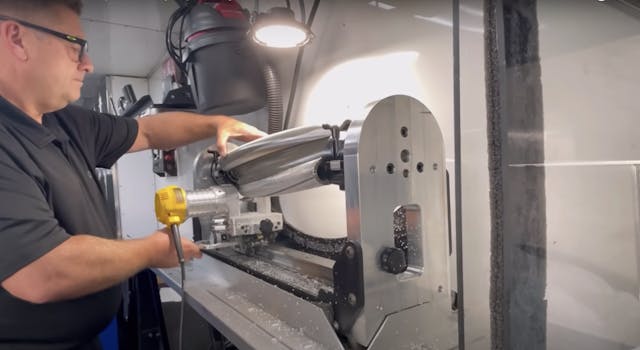Watch what it takes to rebuild an NHRA Top Fuel supercharger
NHRA top fuel drag racing, by the numbers, can make your head spin. The 10,000-horsepower engines are bespoke and feature any number of trick and cool parts. When our own rebuild expert Davin Reckow visited Don Schumacher Racing back in 2018, we all got to see just what it takes to put one of these V-8s together. What they didn’t really show us? The supercharger. So when I stumbled across Rob Wendland’s video covering the entire process of rebuilding one of these 14-71 blowers, my curiosity was officially piqued.
Because there are generally few parts that make up a supercharger, the teardown and rebuild process is fairly simple. The true tuning and attention to detail concerns the rotors and the case. In this particular video, Wendland rebuilds an older blower that is not hyper-competitive, which means he’s comfortable with a bit of tolerance for imperfection that the top teams would not accept. Even still, putting together one of these superchargers is anything but slap-dash affair.
The first step is disassembling and mounting up the rotors in a special fixture to remove the clover end caps and seals. There are two different seals: the plastic outer and teflon inner. The plastic seal fits between the tip of the rotor lobes and the blower case and, as Wendland points out during his disassembly, they get the most chewed up compared to any of the other mechanical parts. The inner teflon is there to seal the lobes against each other; those tend to last longer in normal running conditions.
With new seals pulled in, it is off to a very snazzy fixture to trim them down to the proper size. This is where the best are separated from the rest. Wendland makes the initial cut, then a second tuning cut before test-fitting the rotors back into the case. This blower case appears to have some distortion, so the seals need a second trimming to fit. Meanwhile, the case needs a slight dressing with a sander to get all of the parts to play nice together. Wendland points out that none of the top teams would go through the effort to sand down the case in this fashion, but since this is an older, noncompetitive blower, there’s little downside.
Even when Wendland spins the supercharger over by hand, you can hear air being sucked in through the throttle blades atop the blower hat. When you’re dealing with the precision and sheer performance that Top Fuel engines achieve, it’s details like this that matter. Remember, these engines endure immense abuse and are rebuilt multiple times in a single weekend. The actual handiwork might look a bit tedious, and Wendland probably makes it all look easier than it truly is, but this is one of the best breakdowns we’ve seen of the impressive skill and engineering that goes into Top Fuel racing. And that’s just for the blower.


